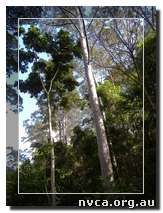 | ||||
| Home |
ForestsThe Australian Native Forest Sector: Causes of the Decline and Prospects for the Future 2013 Australia’s native forest sector has experienced a significant contraction over the past five years. This is reflected in log production from native forests: roundwood removals over the period 2009-2011 were 30 per cent below the average from the previous 18 years. Similarly, woodchip exports, a mainstay of the hardwood sector, fell by 33 per cent between 2008 and 2012. The fall in production and exports has bankrupted the native hardwood industry’s largest producer, Gunns Limited, and led to the closure of numerous processing facilities around the country. State forest agencies have also recorded substantial losses. For The response of federal and state governments to the downturn has been to look for ways of assisting the sector to enable it to adjust to the new market conditions. The most high profile example of this is the Tasmanian Forests Intergovernmental Agreement (IGA), which was signed by the Commonwealth and Tasmanian Government in August 2011. The aim of the IGA is to: Under the IGA, industry representatives, unions and environment groups were charged with the responsibility of negotiating an agreement on key conservation and resource access issues. This would then provide the basis for government action, including the provision of Commonwealth and state government assistance for the forestry industry and other nonforestry projects that would be designed to help diversify the Tasmanian economy. While laudable, this ideal ignores the economic realities facing the native forest sector, particularly in Tasmania. There is a perception amongst some policy makers and the wider community that the contraction of the Australian native forest sector has been due to three main factors: The argument often advanced by the industry is that the conservation initiatives of the 1990s and 2000s triggered the initial decline in the sector; then the global financial crisis and high dollar caused the abrupt downturn seen after 2008. This analysis suggests that government assistance may only be needed on a short-term basis to see the sector through the current crisis. However, while these three factors have had a material impact on the industry, the underlying drivers of the contraction are related to structural changes in domestic and international wood product markets. These structural factors are likely to persist and raise questions about the merits of providing additional government assistance to the native forest sector when it is potentially financially unsustainable.
|
| ||
| About Us | ||||
| Support NVCA | ||||
| Biodiversity | ||||
| Climate Change | ||||
| Forests | ||||
| GE-Free Nambucca | ||||
| Local Government | ||||
| Nambucca Estuary | ||||
| National Parks | ||||
| Newsletters | ||||
| President's Report | ||||
| Our History |    | |||
| Links | ||||

